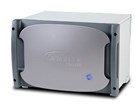Aeroflex Launches TM500 LTE-A Test Mobile With Addition Of Interference Cancellation For SON HetNets

Addition of eICIC for LTE-Advanced heterogeneous networks completes test UE support for key 3GPP Release 10 LTE-A features
Aeroflex Limited, a wholly owned subsidiary of Aeroflex Holding Corp., announced recently that it has added support for enhanced Inter Cell Interference Cancellation (eICIC) to the TM500 Test Mobile platform, which is already used by all the world’s major infrastructure vendors. Functionality for testing carrier aggregation was added to the platform earlier this year. With this latest update the TM500 LTE-A Test Mobile is being launched, supporting all the key LTE-A features of 3GPP Release 10.
eICIC is an enhanced inter-cell interference coordination technique specifically designed to improve the overall performance of heterogeneous network (HetNet) deployments, and is one of the main features specified for LTE-Advanced (LTE-A) in 3GPP Release10. The main application of eICIC is to improve cell edge performance and coverage in HetNet deployment scenarios where nodes of different types—macro-, micro- and picocells—have coverage areas that partially overlap.
This latest enhancement to the TM500 Test Mobile platform allows engineers developing and testing LTE base stations (eNodeB) to integrate and validate the eICIC feature and to verify the advantages of heterogeneous deployments.
“Heterogeneous networks are now becoming a reality to address the need for increased network capacity. Self Organizing Networks will be an important method for improving heterogeneous network performance and efficiency in an automated way. This brings the need for more sophisticated interference management techniques to exploit these benefits, and also the right test instruments to verify this performance,” said Nicola Logli, Product Manager at Aeroflex. “The addition of LTE-A eICIC support and the launch of the TM500 LTE-A Test Mobile is the latest phase in our roadmap, tracking all the latest 3GPP updates and ensures that infrastructure vendors can test them as soon as they are needed.”
The TM500’s support for eICIC measurements, which applies to both FDD and TDD, includes logging the eICIC specific protocol messages and physical layer measurements.
More about eICIC
eICIC represents an extension of the interference management techniques that were used in LTE Release 8 and 9, and it differs from these techniques in that it is not transparent to the UE (User Equipment) and therefore needs to be verified with a test UE such as the TM500.
eICIC requires coordination between each of the network nodes that communicate with each other through the X2 interface. In a typical application, a macrocell whose coverage area overlaps with that of one or more small cells can coordinate its transmissions with these nodes. This allows it to reduce the interference caused to the UEs belonging to these cells in certain subframes, by limiting the macrocell transmissions to DL Common Reference Signal (CRS) alone, with no data, during certain subframes – these are called Almost Blank Subframes (ABS). This results in the UEs seeing lower interference at the cell edge of the microcell or picocells, and gives the microcell or picocells the opportunity to perform a “cell range expansion” to increase the coverage area during these subframes. Cell range expansion techniques are used for offloading some of the UEs from the macrocell to the smaller cell when the macrocell is loaded too heavily, and are used to achieve better load balancing. The UE that has been offloaded needs to be scheduled from the smaller cell during the low interference ABS. Load balancing is an important constituent of SON, a range of techniques that promote the overall improvement of network performance and energy saving.
The eICIC support impacts the UE measurements procedures in order to feed back correct and reliable information to the network. Along with these enhancements, the TM500 LTE-A Test Mobile can be used to verify the correlation between the measurements reported by the UE and eNodeB signalling (ABS patterns), verifying the benefits of interference management.
Price and availability
For more information, contact your local Aeroflex sales office by visiting or calling Aeroflex Sales at (800) 835-2352 or info-test@aeroflex.com.
About Aeroflex LTE and LTE-A Expertise
Aeroflex LTE leadership started with the delivery of test systems in 2007 and now continues with a complete range of end-to-end test systems that cover R&D, performance, service, and manufacturing test applications for LTE TDD and FDD network equipment and terminals.
The TM500 Test Mobile family is in use with almost every base station manufacturer across the world, and can be regarded as the de facto standard for eNodeB development and testing. EAST500 is the only network capacity test solution that incorporates the proven Aeroflex TM500 LTE air interface.
The Aeroflex 7100 LTE Digital Radio Test Set is a complete one-box test system providing all the tools required for the measurement and characterization of user equipment (UE) chip sets and mobile terminals to 3GPP LTE standards, including optional signal fading simulation.
The PXI 3000 Series, modular RF test system based on PXI technology is a proven solution to accelerate throughput in manufacturing and time to market in R&D while catering for current and future RF test needs. It is particularly suited to modern cellular and wireless data communications and critical testing in a high volume manufacturing environment.
Aeroflex has engineers working in centers around the world on its LTE and LTE-Advanced test systems, to support the current and next generation of networks and devices.
About Aeroflex
Aeroflex Incorporated is a leading global provider of high performance microelectronic components and test and measurement equipment used by companies in the space, avionics, defense, commercial wireless communications, medical and other markets.
Source: Aeroflex
